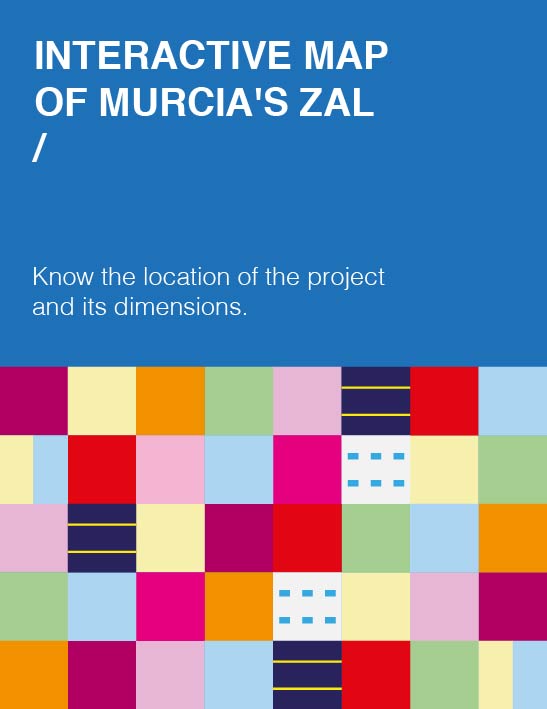
Territorial Action Program (TAP)
Special Infrastructure and Management Plan
Promotion and management model
Logistics platform or industrial and commercial area equipped with specific facilities in which multiple operators carry out activities relating to transport, logistics and freight distribution both nationally and internationally.
Logistics platforms are comprised of a set of functional areas somewhat homogeneous in terms of activities and functions:
-
Service areas or centers, including activities rarely involving freight handling:
-
General service areas: services for vehicles, people, administrative or commercial functions or custom and inspection services.
-
Special service areas: single-function or specialized areas, such as hazardous goods.
-
Central service areas: offices, maintenance, safety, etc.
-
Logistics areas where the following activities are carried out: storage (refrigerated or not), order preparation, packing, packaging, labeling, load classification, container opening, urban distribution, etc. These areas provide service to logistics companies and operators.
-
Intermodal areas where transport mode exchanges take place and the following transport support services are offered: transfer services, transport equipment services, load services, etc.
Set of premises needed to handle, store, load and unload railway freight. These premises include the following elements:
-
Railway area: rail access, railway routes for reception, dispatch, loading, unloading, storage and handling of trains, operational control center, workshop for hauled stocks, etc.
-
Loading and unloading area (railway side): container transfer and storage area, container conservation workshop, gantry crane, workshop for repair and maintenance of freight handling equipment, etc.
-
Loading and unloading area (road side): road access to the area, business management building, road weighing scale, building for auxiliary companies, etc.
Set of Intermodal Terminal warehouses and premises supporting activities related to freight storage, handling and refrigeration. It also includes the following buildings: administration, customs, health inspection, access control, auxiliary services and complementary services at the Terminal.
Railway corridor included in the Basic European Transport Network (annex I of EU Regulation Nº 1316/2013) connecting the Iberian Peninsula to South and East European states. In Spain, this network runs along the Mediterranean coast, with connections to the Saragossa – Madrid – Seville axis. With links to six other railway corridors, this is one of the most interconnected corridors in Europe. The relevance of this corridor, both in terms of passengers and freight, is illustrated by the following characteristics:
-
Railway interconnection to Spanish ports in the Mediterranean coast, favoring optimized multimodal logistic chains through efficiency and enhanced sustainability.
-
Railway connection to an axis with high concentration of population and industrial activity in 5 countries: Spain, France, Italy, Slovenia and Hungary.
Territorial Action Program (TAP)
Land management instrument developed in Chapter IV of Title II in Law 13/2015, dated March 30, for territorial and urban management in the Region of Murcia.
Article 28 in this Law establishes its definition and functions:
1. Territorial Action Programs are executive tools for short-term planning applied to Territorial Management Plan forecasts and Territorial Management Guidelines, if needed. Exceptionally, they could also be applied independently.
2. They have the following functions:
-
Specify and schedule territorial actions foreseen in higher-ranked territorial management instruments. Exceptionally and if duly justified, they can be presented individually. In such cases, their actions would need to be specified and scheduled.
-
Define, in collaboration with involved agencies and administrations, the specific economic commitments and their temporary distribution, in line with budgetary forecasts.
-
Specify deadlines and dates for the development of projects and works to be carried out.
Special Infrastructure and Management Plan
Urban planning instrument developed in Section 5 of Chapter I, Title VII in Law 13/2015, dated March 30, for territorial and urban management in the Region of Murcia.
Article 125 in this Law establishes its definition:
The Special Plan is a suitable instrument for implementation of special urban uses and actions in all land categories and types specified in the general planning development scheme. In case of scheme absence, it can also apply provided its origin is duly justified.
Promotion and management model
The promotion and management model of an Intermodal Logistics Platform will define the business model for the different activities developed within it. The following will be established:
-
Analysis of the most suitable developing and/or managing organizations (or organization) for each business, based on parameters relating to economic-financial viability, as well as to conditions in terms of legal, urban, business and financial requirements associated to project development.
-
Best mechanisms for integrating private investors in the promotion and/or management of the Platform.
As for the business model, it is expected to help identify stakeholders and their roles, as well as risks in each phase and mitigation measure proposals.
Public-private collaboration refers to different forms of cooperation between public administrations and the private sector, with the aim to ensure funding, construction, renewal, management or maintenance of public service provisions and infrastructures.
The cost-benefit analysis is a technique used to assess investments by listing and assessing in monetary terms all direct and indirect project-related costs and benefits. Social and environmental aspects not considered during financial assessments, are also taken into account. This type of analysis is commonly used in public investments, for which social wellbeing aspects and financial elements need to be assessed.





